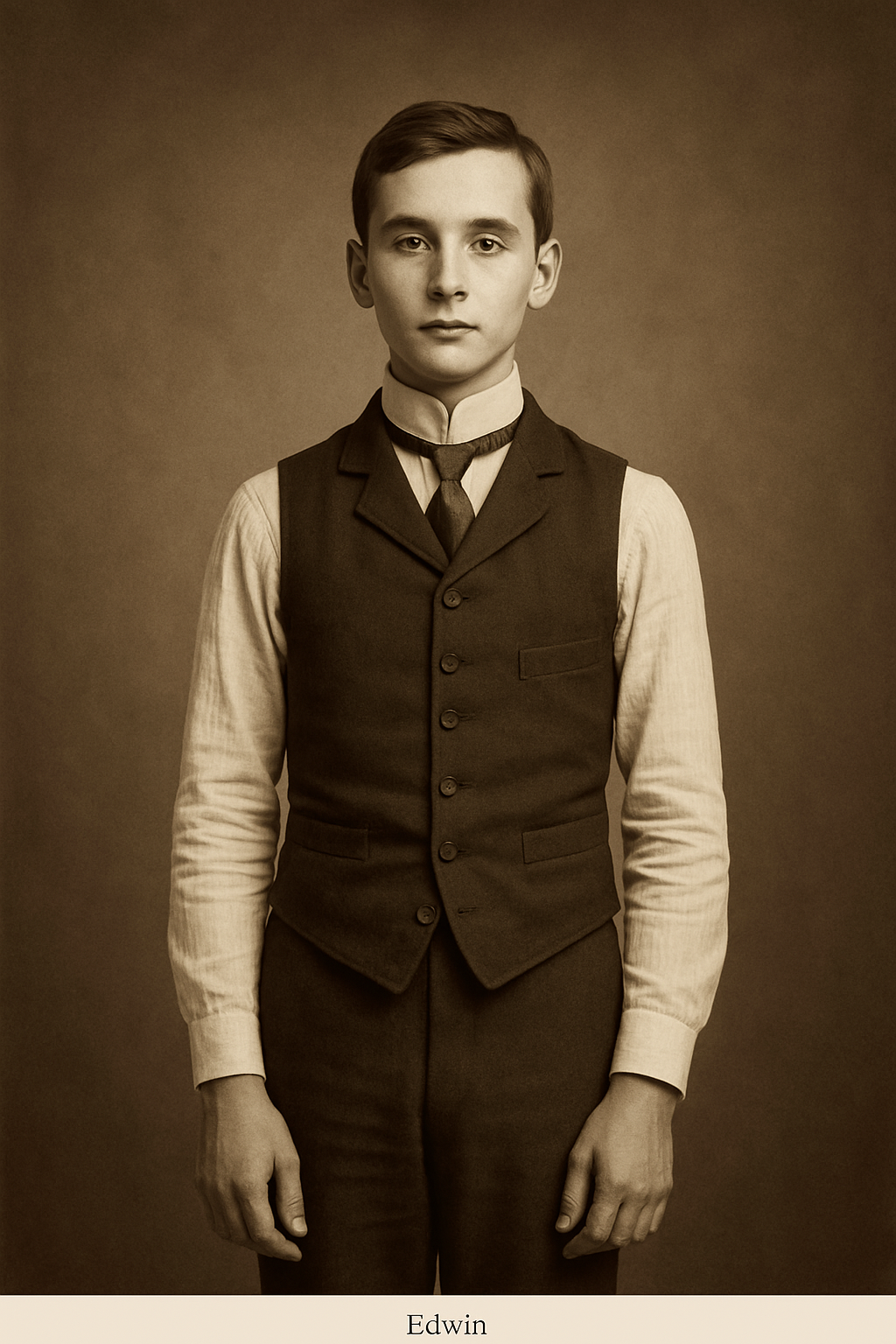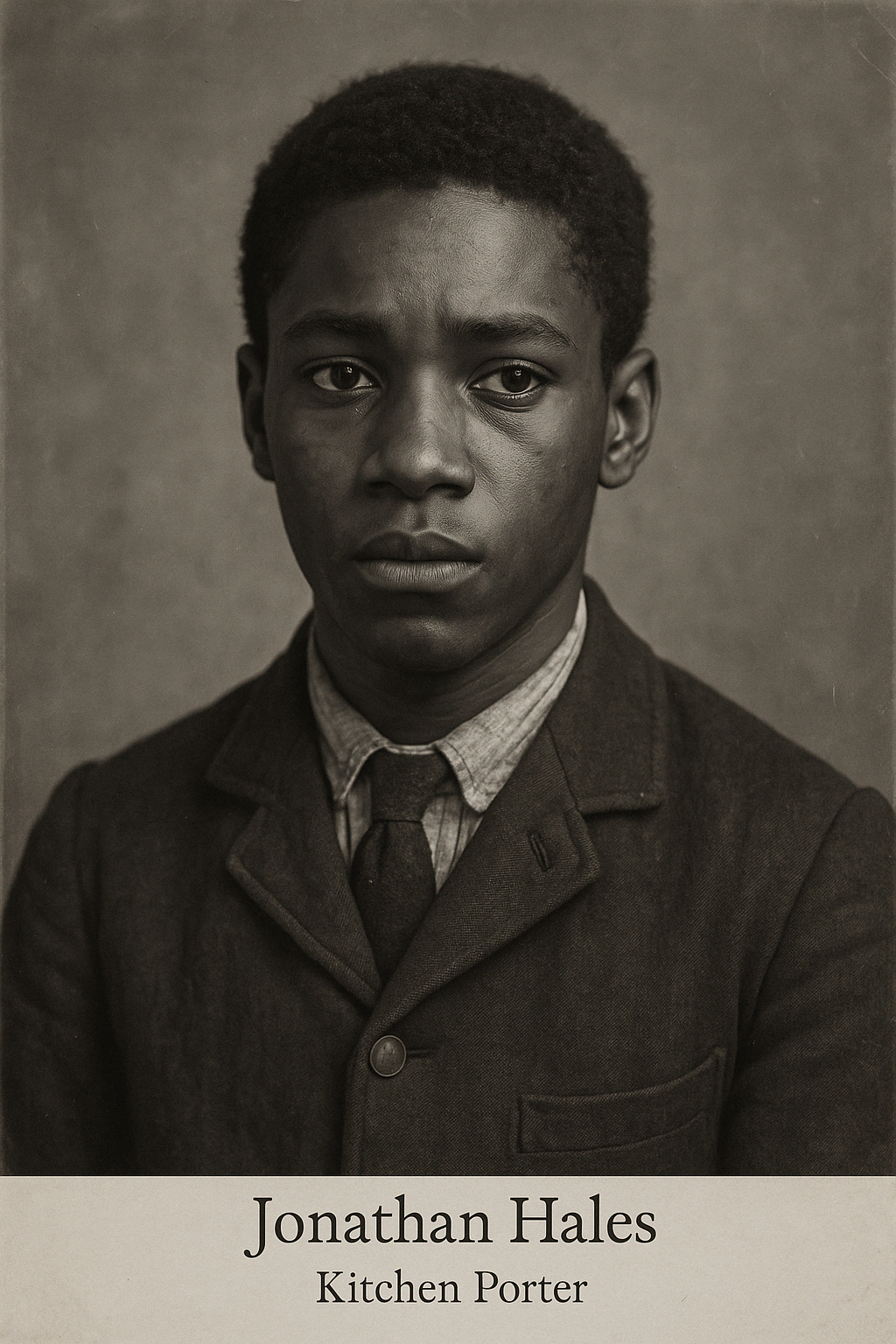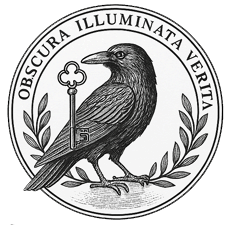Role: Personal Attendant / Domestic Steward of Intimate Care
Born: Estimated 1871 (exact location unknown)
Joined StormCroft House: 1887 (age 16)
Departed: 1890
Last Seen: 1892, associated with London’s Telegraph Office
Clearance: Level I (servant class, informally trusted by multiple high-clearance figures)
Overview
 Edwin’s presence at StormCroft House was, at first glance, ordinary. A quiet, diligent youth taken on as a domestic steward, he arrived with little history and no family trail. What emerged over time, however, was that Edwin was not merely a caretaker of spaces or tasks — he became a caretaker of people, of atmospheres, and of the unseen residue of the house itself.
Edwin’s presence at StormCroft House was, at first glance, ordinary. A quiet, diligent youth taken on as a domestic steward, he arrived with little history and no family trail. What emerged over time, however, was that Edwin was not merely a caretaker of spaces or tasks — he became a caretaker of people, of atmospheres, and of the unseen residue of the house itself.
While officially tasked with maintaining hygiene and providing aftercare for the other male servants, Edwin’s work grew into something far more vital to the rhythms of the house. In interviews, journal fragments, and caretaker notes recovered decades later, Edwin is repeatedly described as:
“…the one you didn’t notice until you needed him. And then he was already there.”
Primary Duties & Responsibilities
-
Washing, Grooming, and Post-Shift Support
Edwin’s core role involved maintaining the physical wellbeing of other servants — particularly those involved in strenuous manual or emotional labour near sensitive installations like the Bell Room, the Quiet Loop, or the Listening Floor. -
Private Stewardship and Emotional Regulation
Known for his calm presence and almost empathic intuition, Edwin was often sent to support servants following exposure to anomalous zones or experimental routines. Several notes refer to him as an “Emotive Anchor”, capable of reducing post-experiment distress through silent presence or grounding rituals. -
Laundering and Deep Garment Hygiene
Among his more intimate tasks was the laundering and deep-cleaning of undergarments, particularly those worn during resonance work. This task, while unremarkable on paper, was considered symbolically important among staff, linking bodily care with containment of psychic residue. -
Non-Sexual Personal Tension Management
House records suggest that Edwin — due to his age, role, and continued exposure to ambient resonance — was encouraged to regulate his own physical and emotional health with personal practices regarded as normal within the servant structure. These acts were not viewed as shameful or erotic, but necessary release of accumulated charge. He was permitted privacy for this and occasionally monitored (with consent) for changes in rhythm or emotional patterning.
Memo: Energetic Regulation and Somatic Discharge – Case Reference: ED/71
Filed under: Resonant Stewardship Protocols – Archive Wing 3C
Date Logged: 4 September 1889
Prepared by: Elias Dunbridge (Archivist – Observational Class II)
Subject: Edwin
Role: Personal Attendant and Emotional Ground Unit
Classification: Stable Conduit – Organic Origin
Condition Monitored: Tension Looping, Internal Charge Retention, and Voluntary Release Behaviours
Summary:
The subject known as Edwin (Ref. ED/71) displays recurring indicators of resonance saturation when operating in high-frequency zones within StormCroft House — particularly during extended service rotations near the Bell Room, Croft Loop alcoves, or underground transitional corridors.
These saturation events often manifest as:
-
Emotional lability
-
Shallow breath and delayed blink reflex
-
Physical warmth in extremities (particularly fingers and ears)
-
Wake-phase dreaming (auditory bleed-through)
To maintain balance, the subject engages in calibrated somatic discharge rituals, commonly referred to in caretaker shorthand as “personal resets.”
Observational Notes:
-
These discharges are not tied to external stimulus but rather internal atmospheric build-up.
-
Somatic release is non-erotic in classification and considered essential for physiological equilibrium.
-
Each discharge event results in trace remnants that contain subtle data markers — faint electromagnetic signatures, thermal patterning, and occasionally crystallised salt-aether deposits on fabric or skin.
Application to Research:
Collected by-products (when ethically obtained with consent and knowledge) are stored in containment jars marked B-Thread and studied under the Vital Trace Initiative. These have been noted to:
-
Amplify quiet-loop conductivity
-
Temporarily stabilise low-tuned Croft Dials
-
Serve as grounding agents in Sentient Echo studies
A notation in Finch’s experimental log reads:
“Of all the House-born residue, his was the cleanest. As if he held no resistance to time.”
Let it be recorded:
“The boy releases what the House cannot carry.”
— Wren, margin note, unsigned
His state is not one of illness nor indulgence, but of service — an interface between the flesh and the field.
Relationship with Jonathan Hales
Perhaps the most emotionally resonant connection in Edwin’s time at StormCroft was with Jonathan Hales, a kitchen porter known for his quiet nature and hypersensitivity to copper.
The two young men developed an unspoken but intimate working relationship, one built on care rather than words. Hales often helped Edwin recover from fatigue or “field-tension” after intense service periods, offering quiet companionship or simply remaining nearby. Staff occasionally referred to Jonathan as “the steady one”, with some noting he would sit with Edwin in silence for hours when the latter had returned pale or trembling from the Bell Chamber corridors.
Several of Elias Dunbridge’s annotated journals suggest that Jonathan was designated unofficially to assist Edwin during moments of imbalance — including emotional surges, restlessness, or disassociation.
Secondary Involvement: Jonathan Hales

During elevated cycle periods, Jonathan Hales (Ref. HA/70) is occasionally seconded to assist in observing Edwin’s post-reset condition. His presence lowers reaccumulation rates and supports rebalancing. While these moments are private, they are considered part of the broader StormCroft resonance ecology and documented only when anomalies arise.
The Experiments
Though not listed as a participant in formal trials, Edwin was occasionally used in observational roles:
-
During Loop calibration events (particularly in 1888)
-
As an emotional counterweight during early Mirror Echo trials
-
And once, possibly, as a “receiver” during a brief entanglement with the Annulet Array (unconfirmed)
He is referred to in one redacted file as:
“Subject E / stabilising presence / resonance neutrality confirmed / residual viable.”
Departure and Aftermath
In 1890, Edwin vanished from the payroll. No formal letter of resignation was filed. One note from Elias Dunbridge simply reads:
“He took nothing but his towel. The thread count held memory.”
He was seen two years later in London, working alongside telegraph boys in the district later implicated in the Cleveland Street scandal. While never officially named in any legal papers, his name appears in a margin annotation of the Whisper Archive:
“E. walked ahead. Two behind. One watched the sky. He was still trying to be useful.”
Legacy
In the decades that followed, Edwin became something of a folk figure among those who maintained the StormCroft files. A few referred to him as “the heart of the house.” Others, including surviving aides of the CroftNet Era, believed he had “left an imprint” — not just on walls or wires, but on people’s capacity to remain whole amid chaos.
His towel — found decades later in the base of the eastern servants’ cabinet — is sealed in Archive Box B-14.
It still ticks when wet.
